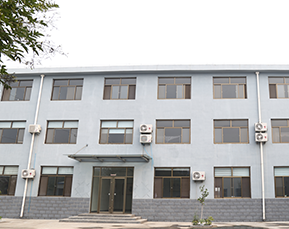 Afrikaans
Afrikaans  Albanian
Albanian  Amharic
Amharic  Arabic
Arabic  Armenian
Armenian  Azerbaijani
Azerbaijani  Basque
Basque  Belarusian
Belarusian  Bengali
Bengali  Bosnian
Bosnian  Bulgarian
Bulgarian  Catalan
Catalan  Cebuano
Cebuano  Corsican
Corsican  Croatian
Croatian  Czech
Czech  Danish
Danish  Dutch
Dutch  English
English  Esperanto
Esperanto  Estonian
Estonian  Finnish
Finnish  French
French  Frisian
Frisian  Galician
Galician  Georgian
Georgian  German
German  Greek
Greek  Gujarati
Gujarati  Haitian Creole
Haitian Creole  hausa
hausa  hawaiian
hawaiian  Hebrew
Hebrew  Hindi
Hindi  Miao
Miao  Hungarian
Hungarian  Icelandic
Icelandic  igbo
igbo  Indonesian
Indonesian  irish
irish  Italian
Italian  Japanese
Japanese  Javanese
Javanese  Kannada
Kannada  kazakh
kazakh  Khmer
Khmer  Rwandese
Rwandese  Korean
Korean  Kurdish
Kurdish  Kyrgyz
Kyrgyz  Lao
Lao  Latin
Latin  Latvian
Latvian  Lithuanian
Lithuanian  Luxembourgish
Luxembourgish  Macedonian
Macedonian  Malgashi
Malgashi  Malay
Malay  Malayalam
Malayalam  Maltese
Maltese  Maori
Maori  Marathi
Marathi  Mongolian
Mongolian  Myanmar
Myanmar  Nepali
Nepali  Norwegian
Norwegian  Norwegian
Norwegian  Occitan
Occitan  Pashto
Pashto  Persian
Persian  Polish
Polish  Portuguese
Portuguese  Punjabi
Punjabi  Romanian
Romanian  Russian
Russian  Samoan
Samoan  Scottish Gaelic
Scottish Gaelic  Serbian
Serbian  Sesotho
Sesotho  Shona
Shona  Sindhi
Sindhi  Sinhala
Sinhala  Slovak
Slovak  Slovenian
Slovenian  Somali
Somali  Spanish
Spanish  Sundanese
Sundanese  Swahili
Swahili  Swedish
Swedish  Tagalog
Tagalog  Tajik
Tajik  Tamil
Tamil  Tatar
Tatar  Telugu
Telugu  Thai
Thai  Turkish
Turkish  Turkmen
Turkmen  Ukrainian
Ukrainian  Urdu
Urdu  Uighur
Uighur  Uzbek
Uzbek  Vietnamese
Vietnamese  Welsh
Welsh  Bantu
Bantu  Yiddish
Yiddish  Yoruba
Yoruba  Zulu
Zulu Specifications for Conveyor Pulley Design and Performance Criteria
Conveyor Pulley Specification An Essential Guide for Efficient Material Handling
Conveyor pulleys are crucial components in material handling systems, providing the necessary support and drive for transporting goods efficiently along conveyor belts. Understanding the specifications of conveyor pulleys is vital for selecting the right type to meet the operational needs of any industry. Here, we will delve into key aspects of conveyor pulley specifications, including dimensions, materials, types, and performance features.
Conveyor Pulley Specification An Essential Guide for Efficient Material Handling
Materials The material used for manufacturing conveyor pulleys significantly affects durability and performance. Common materials include steel, aluminum, and various composite materials. Steel pulleys are robust and suitable for heavy-duty applications, while aluminum provides a lightweight alternative for lighter loads. The selection of the appropriate material is influenced by factors such as load capacity, environmental conditions, and maintenance requirements.
conveyor pulley specification

Types of Pulleys There are several types of conveyor pulleys, each designed for specific functions within the conveyor system. The most common types include drive pulleys, return pulleys, and tail pulleys. Drive pulleys are responsible for providing the force to move the belt, while return pulleys are utilized for supporting the belt on its return journey. Tail pulleys are found at the end of the conveyor and help to maintain belt tension and alignment.
Performance Features Performance specifications can also include features like bearing type, shaft diameter, and load ratings. Most conveyor pulleys are equipped with bearings that allow for smooth rotation and reduced friction. The type of bearings used can vary from standard roller bearings to specialized sealed bearings, depending on the application. Additionally, the shaft diameter plays a crucial role in load distribution and the overall reliability of the pulley.
In conclusion, understanding the specifications of conveyor pulleys is vital for the successful design and operation of material handling systems. By carefully considering dimensions, materials, types, and performance features, businesses can ensure that they select the right pulleys that will meet their operational needs while optimizing efficiency and minimizing maintenance costs. Properly specified conveyor pulleys lead to enhanced productivity and a more streamlined material handling process.
-
Trusted Conveyor Solutions from Leading Conveyor Idler Roller ManufacturersNewsJun.27,2025
-
Reliable Return Idler Solutions for Efficient Belt Conveyor SystemsNewsJun.27,2025
-
Precision Conveyor Accessories for Streamlined Material HandlingNewsJun.27,2025
-
High-Quality Belt Conveyor Idler Solutions for Efficient Material HandlingNewsJun.27,2025
-
High-Performance Belt Conveyor Pulleys for Reliable Material HandlingNewsJun.27,2025
-
Enhancing Material Handling EfficiencyNewsJun.27,2025





























